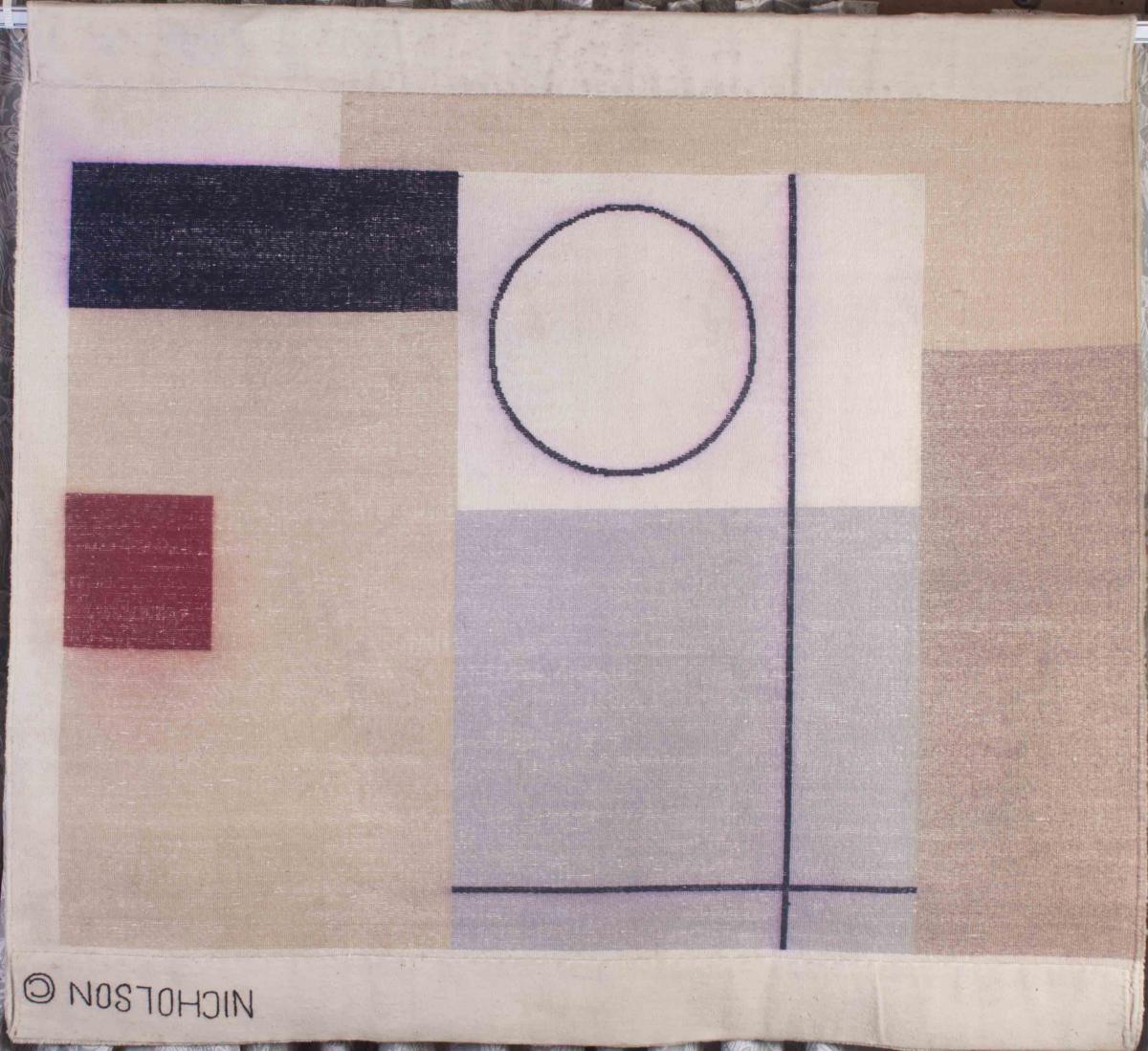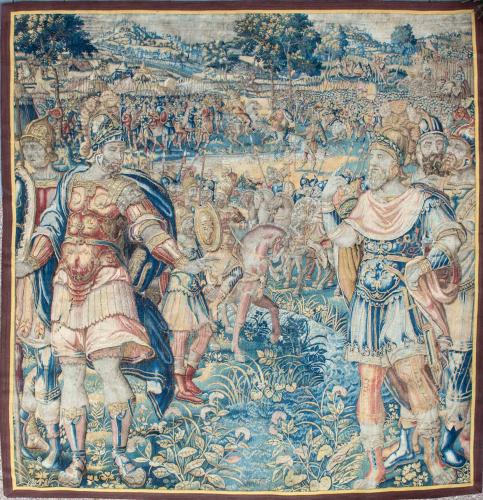








This object is eligible for a Certificate of BADA Provenance
The BADA Standard
- Since 1918, BADA has been the leading association for the antiques and fine art trade
- Members are elected for their knowledge, integrity and quality of stock
- Our clients are protected by BADA’s code of conduct
- Our dealers’ membership is reviewed and renewed annually
- Bada.org is a non-profit site: clients deal directly with members and they pay no hidden fees
Ben Nicholson, O.M. (British, 1894-1982)
WHITE III
stitched signature on the reverse woven wool after a design by Ben Nicholson
69½ by 71in. 176 by 180 cm.
Designed circa 1948.
Originally produced by the Lucie Weill Gallery
Ben Nicholson was born in 1894 into a firmly established artistic family: his father was Sir William Nicholson, one of the English Impressionists, his mother was also a painter, and the sister of the acclaimed painter James Pryde. His first wife was the painter Winifred Nicholson, whilst his second wife was the sculptor Barbara Hepworth. Nicholson enrolled at the Slade School of Fine Art in London in 1911. He remained there for just one term, leaving to work initially in France from 1911 to 1912 (mostly in Tours). He then worked in Italy from 1912 to 1913, Madeira from 1913 to 1914, and California from 1917 to 1918. In England he joined the Axis group, until in 1924 he joined the 7&5 Society, becoming its Chairman in 1926, and in 1933 was a joint founder of Unit One alongside Paul Nash. Whilst visiting France between 1932 and 1933 with Barbara Hepworth, he met Jean Arp and Sophie Taüber-Arp. In France he joined the Abstraction-Création group, after being invited by Jean Hélion. Between 1938 and 1940 he lived in Hampstead, where his neighbour was Mondrian, who was briefly residing in London between stays in Paris and New York. In 1940, with second wife Hepworth, he moved to St Ives in Cornwall. Many artists came to join them here, particularly after the war, and formed a group around him. In 1958 he moved to Brissago in Switzerland for several years, returning to England again in 1971. He was awarded numerous prizes and distinctions: in 1952 he won the Carnegie Prize at the International Exhibition in Pittsburgh; in 1956 he won the First Guggenheim International Prize; in 1957 he won the International Painting Prize at the São Paulo Biennale; and in 1958 he won a major prize at the Venice Biennale. Ben Nicholson is seen as the principal representative of Abstraction in English art between the wars. In 1937, along with the architect J.L. Martin and Naum Gabo, he published the review entitled Circle - International Survey of Constructive Art. Ben Nicholson is undoubtedly one of the great exponents of inter-war British art, particularly British abstraction. In an international context his work draws upon and contributes to the legacy of European Cubism and Neo-Plasticism. His work retains a quintessentially British classicism, with a tendency towards sparse, ethereal draughtsmanship which is particularly perceptible in his large black drawings on canvas. These are based on a restrained vocabulary of household items pared down to their bare essence, to the point at which they constitute abstract circles and squares realised through a barely coloured delicate palette, with the transparency of watercolour, a few shadow effects and discreet experiments with paint and grottage. The extreme refinement and restraint of his work constitutes his unique contribution to modern British, and international, art.
Condition report
The rug has been recently cleaned and has undergone full colour restoration. There is only marginal bleeding to the edges of the blocks of colour as a result. The pile remains in excellent condition.The BADA Standard
- Since 1918, BADA has been the leading association for the antiques and fine art trade
- Members are elected for their knowledge, integrity and quality of stock
- Our clients are protected by BADA’s code of conduct
- Our dealers’ membership is reviewed and renewed annually
- Bada.org is a non-profit site: clients deal directly with members and they pay no hidden fees










